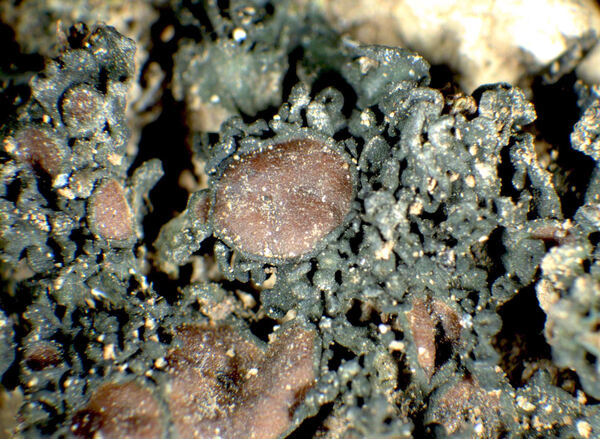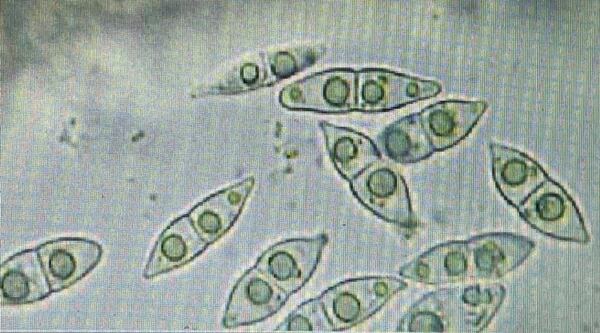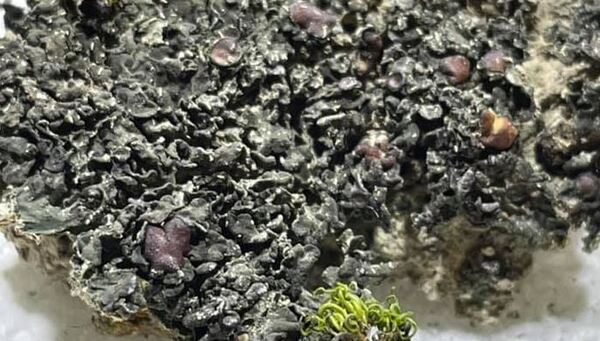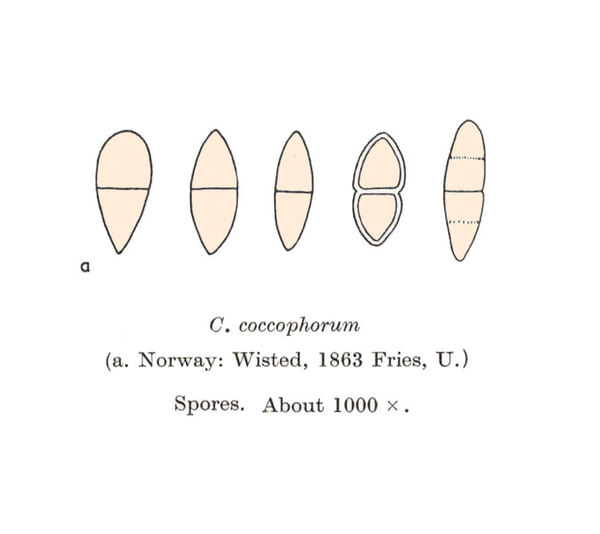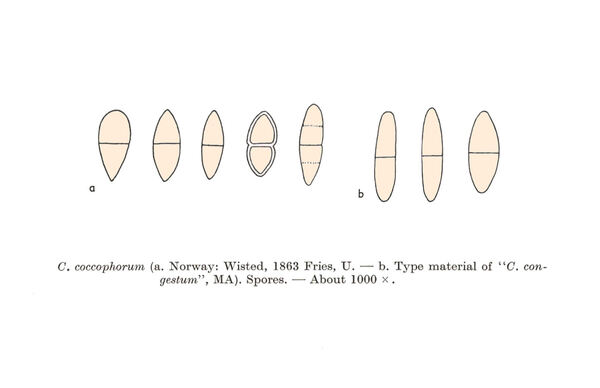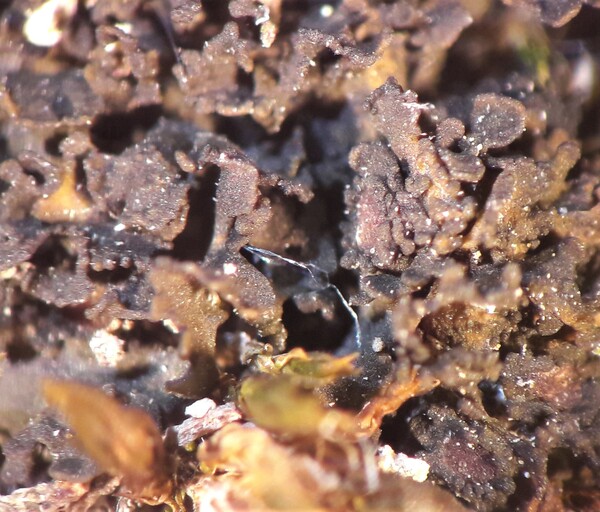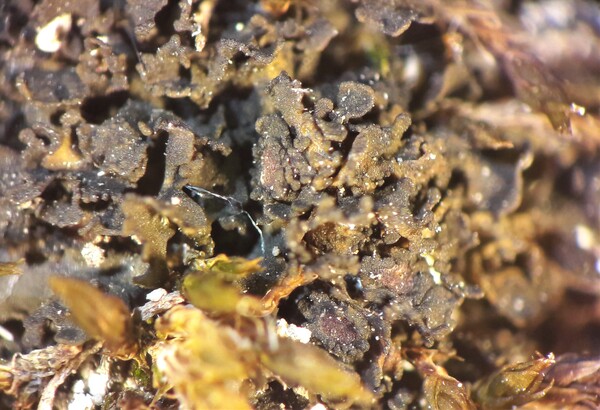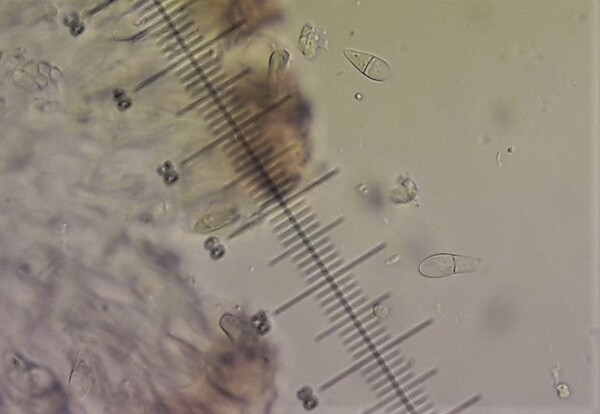Enchylium coccophorum (Tuck.) Otálora, P.M. Jørg. & Wedin
Fungal Divers. (online version), 64: 286, 2013. Basionym: Collema coccophorum Tuck. - Proc. Amer. Acad. Arts and Sc., 5: 385, 1862.
Synonyms: Collema harmandii Samp.; Collema pulposum var. microphyllum Harm.
Distribution: N - Emil (Nascimbene & al. 2021). C- Tosc (Loppi & al. 1998).
Description: Thallus foliose, homoiomerous, gelatinous and 150-350 µm thick when wet, dark olive-green to black, forming up to 2.5(-3) cm wide rosettes. Lobes elongate, radiating or sometimes imbricate, more or less smooth, 0.5-3 mm wide, flat to concave, more or less swollen and plicate especially toward the tips, resembling those of typical E. tenax. Upper and lower cortex absent. Apothecia frequent, lecanorine, sessile, 1-1.5(-3.5) mm across, with a reddish brown to brown, flat to convex disc and a thin to thick, smooth to lobulate thalline margin. Thalline exciple ecorticate; proper exciple euthyplectenchymatous; epithecium brownish; hymenium colourless, 70-90(-100) µm high, I+ blue; paraphyses simple or sparingly branched in upper part, 1.5-2 µm thick at mid-level, with clavate to subglobose tips; hypothecium colourless to pale yellow. Asci 8-spored, cylindrical-clavate, the apex strongly thickened, the apical dome K/I+ pale blue, with a downwardly projecting K/I+ deep blue tubular structure. Ascospores 1-septate, not constricted at septum, hyaline, ellipsoid to fusiform, (13-)15-24(-28) x (4.5)6.5-8.5(-9) µm. Pycnidia marginal, globose, paler than Thallus. Conidia slightly swollen toward ends, 4.5-6 x 1.5-18 µm. Photobiont cyanobacterial (Nostoc, the cells in long chains). Spot tests: all negative. Chemistry: without lichen substances. Note: on calciferous soil in dry grasslands: this almost cosmopolitan species of dry areas - which can be easily mistaken for E. tenax - might be more widespread in Italy, especially in dry Mediterranean areas of the South.
Growth form: Foliose, narrow lobed
Substrata: soil, terricolous mosses, and plant debris
Photobiont: cyanobacteria, filamentous (e.g. Nostoc, Scytonema)
Reproductive strategy: mainly sexual
Subcontinental: restricted to areas with a dry-subcontinental climate (e.g. dry Alpine valleys, parts of Mediterranean Italy)
Commonnes-rarity: (info)
Alpine belt: absent
Subalpine belt: absent
Oromediterranean belt: absent
Montane belt: absent
Submediterranean belt: very rare
Padanian area: absent
Humid submediterranean belt: absent
Humid mediterranean belt: very rare
Dry mediterranean belt: very rare

Predictive model
Herbarium samples
Growth form: Foliose, narrow lobed
Substrata: soil, terricolous mosses, and plant debris
Photobiont: cyanobacteria, filamentous (e.g. Nostoc, Scytonema)
Reproductive strategy: mainly sexual
Subcontinental: restricted to areas with a dry-subcontinental climate (e.g. dry Alpine valleys, parts of Mediterranean Italy)
Commonnes-rarity: (info)
Alpine belt: absent
Subalpine belt: absent
Oromediterranean belt: absent
Montane belt: absent
Submediterranean belt: very rare
Padanian area: absent
Humid submediterranean belt: absent
Humid mediterranean belt: very rare
Dry mediterranean belt: very rare

Predictive model
| Herbarium samples |
 Index Fungorum
Index Fungorum
 GBIF
GBIF
